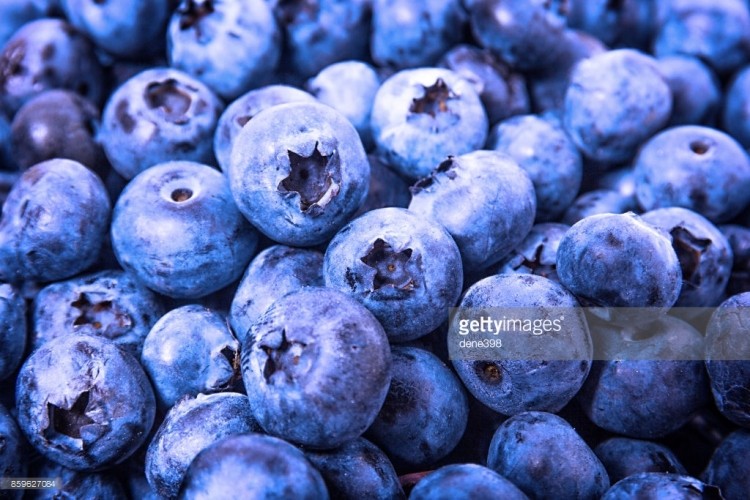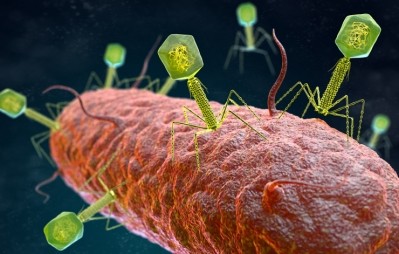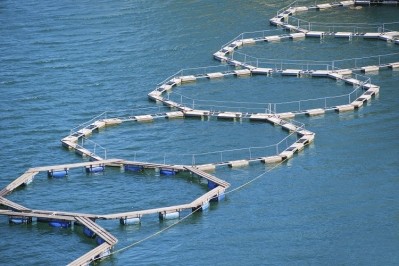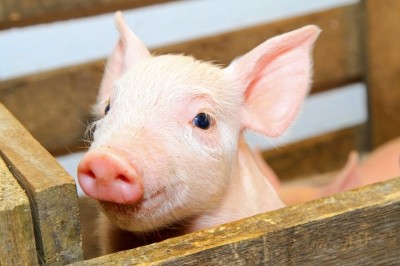Special Edition: Gut health
Berry juice processing by-product could boost growth in chickens

They published their findings in Frontiers in Microbiology.
The researchers, based at the Agricultural Research Services of the US Department of Agriculture (USDA) and the University of Maryland, found that berry pomace – a byproduct from a berry juice company - could improve the growth of poultry by modulating the gut microbiome.
“In this study, we discovered BPE supplementation in water increased the mean body weight of chickens by 5.8% and caused an AGP-like pattern in the cecal bacterial community with a comparative increase of Firmicutes and a concomitant reduction of Bacteroidetes in chicken ceca.”
The authors note increasing concern over the impact of AGPs on the emergence of antibiotic resistance in zoonotic bacterial pathogens in the microbial community of the poultry gut.
“Withdrawing sub-therapeutic use of antibiotics in conventional as well as organic poultry production systems may help to mitigate the emergence of antibiotic resistance in pathogens. However, reduced growth rates in animals that are observed in the absence of AGPs will impact the efficiency of production and perhaps jeopardize food security.
“These emerging issues for both conventional and organic poultry production highlight the need for alternative approaches to improve feed efficiency in the absence of AGP supplementation.”
They said the use of bioactive phenolics from berry by-products could potentially help to mitigate the development of antibiotic resistance in zoonotic bacterial pathogens. Further investigations at the farm level are needed to confirm the findings and to evaluate the practicality of the use of such bioactives through cost-benefit analysis, they added.
"In general to confirm the findings, this type study needs three steps: In vitro, in vivo (animal/poultry trial in monitored/control environment) and then the final one is a field level study (commercial farms). So far, we have completed the first and second steps and found exciting findings. Now we are planning to perform the final step of the study - the commercial farm level [trial]," Debabrata Biswas, associate professor, Department of Animal and Avian Sciences, and Center for Food Safety and Security Systems, University of Maryland, told us.
The team, she added, is in the process of contacting small and midsize poultry farms to perform the commercial trial phase.
Background
The researchers said the aim of their study was to determine the composition of phenolic extracts from blueberry and blackberry pomaces and evaluate their functionality as an alternative intervention to promote the growth of broilers via modulation of the gut microbiota.
“We further aimed to study the cecal resistomes of these broilers, which will provide important insights into the applicability of berry pomace phenolics to replace AGPs in poultry production.”
The authors said byproducts or pomaces from the berry juice industry are major sources of phenolics that have roles in health improvement through anti-inflammatory, antimicrobial, anti-carcinogenic, anti-oxidant, and vasodilatory along with other beneficial properties (Boivin et al., 2007; Jepson and Craig, 2007; Tzounis et al., 2011; Salaheen et al., 2014).
While dietary supplementation of plant phenolic extracts has been demonstrated to enhance growth performance in broilers, the mechanism of action has not yet been elucidated (Hernández et al., 2004).
The researchers said that recent observational and epidemiological studies indicated differences in the microbial communities of the ceca of conventional broilers to their organic counterparts (Torok et al., 2011; Singh et al., 2013; Mancabelli et al., 2016).
Furthermore, they said, observed neutral effects of AGPs on germ free animals indicated the importance of AGP-dependent gut microbiota modulation on growth promotion in animals (Coates et al., 1963).
“Turnbaugh et al. (2006) revealed the association of two dominant bacterial phyla, the Bacteroidetes and the Firmicutes, with weight gain, an observation that was supported by other subsequent studies (Gong et al., 2008; Singh et al., 2013; Mancabelli et al., 2016).
Gong et al. (2008) reported an increased abundance of Lactobacillus spp., Clostridiales and Enterobacteriaceae in chicks that were treated with AGP. Additionally, a correlation between the Firmicutes/Bacteroidetes (F/B) ratio, weight gain, and antibiotic treatment was reported by Singh et al. (2013).”
The researchers said these findings inspired their probe into the effect of AGP versus phenolics on the modulation of broiler gut microbiota, resistome profile, functional enzymes involved in digestion, phage induction and other potential mechanisms behind improved growth performance.
Methodology
The team said they adopted mass spectrophotometric, phylogenetic, and shotgun-metagenomic approaches to evaluate BPE from blueberry (Vaccinium corymbosum) and blackberry (Rubus fruticosus) pomaces as AGP alternatives in broilers.
They said pomace extracts were prepared using commercial pomaces in powder form and stored at 4 degrees Celsius. Berry pomace extract (BPE) was comprised of blackberry and blueberry pomace extracts at 1:1 v/v ratio. Total phenolic content in each extract was determined spectrophotometrically (Singleton et al., 1999) and expressed as Gallic Acid Equivalent (GAE).
“We conducted two trials with 100 Cobb-500 broiler chicks (in each trial) in four equal groups that were provided water with no supplementation, supplemented with AGP (tylosin, neomycin sulfate, bacitracin, erythromycin, and oxytetracycline), or supplemented with 0.1 g Gallic acid equivalent (GAE)/L or 1.0 g GAE/L (during the last 72 h before euthanasia) of BPE for 6 weeks.”
Results
The researchers found the chickens supplemented with AGP and 0.1 g GAE/L of BPE gained 9.5 and 5.8% more body weight, respectively, when compared to the control group (water only).
The microbiomes of both the AGP- and BPE-treated chickens had higher Firmicutes to Bacteroidetes ratios.
AGP supplementation appeared to be associated with higher relative abundance of bacteriophages and unique cecal resistomes compared with BPE supplementation or control, they said.
“These findings established a baseline upon which mechanisms of plant-based performance enhancers in regulation of animal growth can be investigated. In addition, the data will aid in designing alternate strategies to improve animal growth performance and, consequently, production.”
Source: Frontiers in Microbiology
Published online ahead of print: doi.org/10.3389/fmicb.2017.02088
Title: Alternative Growth Promoters Modulate Broiler Gut Microbiome and Enhance Body Weight Gain
Authors: S. Salaheen, S. Kim, B. J. Haley, J. S. Van Kessel, D Biswas







